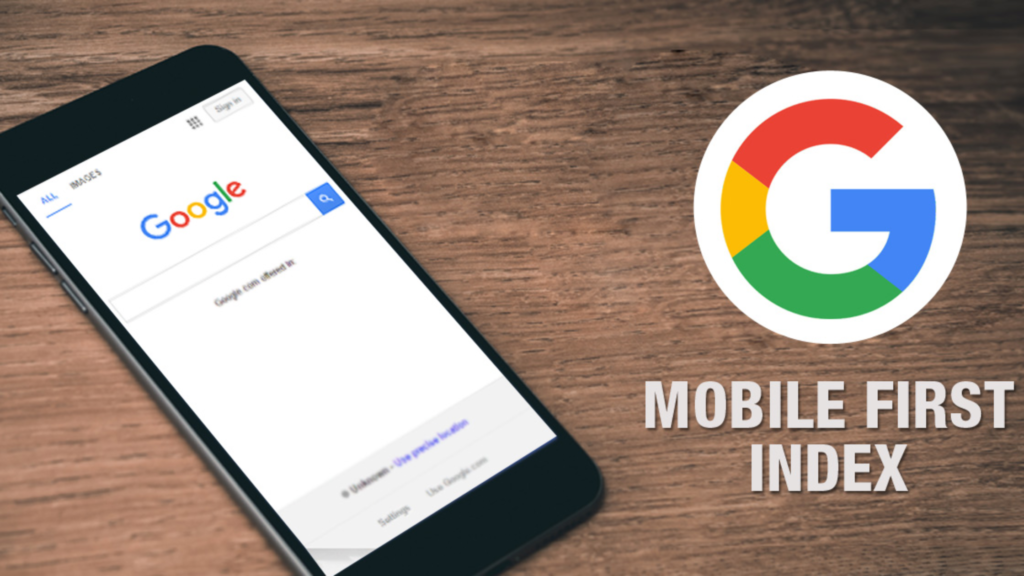Google always says to develop for the best user experience as opposed to for Google. It uses artificial intelligence and is pretty smart when it comes to navigation menus. This is pretty common and the general consensus is that it will detect hidden links in navigation menus and treat them the same.
Now if we’re talking about core page content (eg. content specific to the page – found between the footer and the header) Google will treat accordions, dropdowns, and other hidden text with much less importance. It will still index links there, but it has much less weight on ranking.
Since Google’s March 2020 announcement of relying solely on the smartphone Googlebot for indexing, the transition to mobile-first indexing has been on the horizon. This significant change means websites solely existing in a desktop format will no longer be visible in search results, affecting content like comments, data, images, and videos.
Initially scheduled for September 2020, the switch was postponed due to the unforeseen impact of the global pandemic on businesses, particularly those struggling to migrate their websites to mobile.
What Happens in March 2021 Exactly?
While the switch to mobile-first indexing will occur rapidly, it won’t happen overnight. Google Developer Advocate John Mueller explains that Googlebot crawling will increase post-switch, and the transition will take time, potentially longer for larger domains.
Mueller further clarifies that occasional crawling will still occur with the traditional desktop Googlebot, but the majority of crawling for search will be handled by the mobile smartphone user-agent.
This change also raises concerns for mobile websites currently configured as m-dot versions. Following the update, linking m-dot sites to desktop versions becomes the only option, potentially resulting in dropped content if desktop users aren’t redirected. This risk is particularly relevant for websites utilizing hreflang attributes.
In light of these challenges, Google developers recommend abandoning m-dot usage entirely, citing potential confusion among both search engines and users.
Adopting a responsive design approach, websites can ensure optimal viewing across all devices, eliminating the need for separate m-dot versions and simplifying the transition to mobile-first indexing.
Why Did Google Make This Switch?
More people are using mobile devices to access the internet than ever before. In 2023, over 60% of global web traffic came from mobile devices. This means that it’s more important than ever for websites to be mobile-friendly.
Google also wants to provide users with the best possible search experience, regardless of the device they’re using. Indexing and ranking the mobile version of your website, Google can ensure that users are able to find the information they’re looking for quickly and easily.
Preparing Your Site for Mobile First Indexing
As the March 2021 deadline for mobile-first indexing approaches, website owners naturally wonder how to protect their online presence. If you’ve already implemented mobile functionality, congratulations! For others, time is of the essence.
Assessing Your Current Status:
Before diving into optimizations, first assess your website’s current mobile-first indexing status. Two tools can help:
- Google Search Console: This tool provides insights into your website’s mobile readiness and indexing status.
- URL Inspection Tool: This tool allows you to analyze individual pages and identify any mobile-first indexing issues.
Mobile-First Indexing Best Practices:
To ensure a smooth transition and avoid any negative impact, follow these best practices directly from Google:
- Meta Robots Tags: Use identical meta robots tags on both mobile and desktop versions.
- Lazy Loading: Avoid lazy loading primary content until user interaction.
- URL Blocking: Don’t block URLs from crawling by search engines.
- Content Parity: Maintain consistent content across both versions, especially clear headlines.
- Structured Data: Implement the same structured data markup (e.g., breadcrumb, product, video) on both versions.
- Mobile Ads: Ensure your ad placements are optimized for mobile devices.
- Image Optimization: Use high-quality images in supported formats and provide alt text for accessibility.
- Video Optimization: Place videos in supported formats and make them easily accessible.
Additional Resources:
For comprehensive guidance on mobile-first indexing preparation, explore these resources:
- Checking hreflang links: https://chrome.google.com/webstore/detail/hreflang-tag-checker/hjgdcecfiohgajnhilmjhebdganpaomk
- Cutting fragment URLs: https://www.seroundtable.com/url-fragment-identifiers-in-google-search-console-30198.html
- Verifying robots.txt directives: https://www.google.com/webmasters/tools/robots-testing-tool
Don’t Panic About Mobile-First Indexing
While Google’s mobile-first indexing announcement may seem daunting for businesses with older, non-mobile websites, ample time remains for updates and optimizations before the March 2021 deadline. Implementing the recommended best practices provided above, such as content parity, structured data markup, and image optimization, is crucial for ensuring a smooth transition.
For those who lack internal expertise, seeking assistance from a professional web designer can prove invaluable. However, regardless of your chosen approach, remember that clear, SEO-optimized website copy remains essential for both desktop and mobile versions.
Tip #1: Ensure Your Site’s Content Is Consistent
To make your site work well with mobile-first indexing, first, ensure your content is the same on mobile and desktop. Don’t hide important stuff on mobile. Google looks at your mobile site first, so it should be as good as your desktop. Use the same tags on both versions to avoid confusion and duplication.
Tip #2: Improve Your Site’s Speed And Performance
For mobile webviews consider using AMP or Facebook Instant Articles for very fast mobile experiences. If you are not able to go with AMP or Instant Article then analyze and eliminate render-blocking resources to improve page load sequences. Make sure you resize and crop images to the exact dimensions needed vs just scaling down.
Tip #3: Optimize your site’s design and layout
To make your website work well on mobiles, think about how it looks and works on smaller screens. Use responsive design so it adjusts to different screens.
Follow these tips: have a clear menu, use big and easy-to-read fonts, add contrast and color to important parts, use short paragraphs, clear headings, and lists. Also, include buttons to guide users and avoid making them scroll sideways or zoom in.
Tip #4: Test And Monitor Your Site’s Performance
The fifth step to make your site work well on mobile is to test and watch how it performs on different devices. Use tools to see how your site looks and works on phones and tablets.
Google Analytics helps track how many people use your site on mobile and how well it’s doing. Check your site’s mobile status and any issues in Google Search Console. Keep an eye on Google’s updates to their mobile rules and how they rank sites.
Tip #5: Stay Updated And Informed
The mobile landscape evolves rapidly so continuous learning is key. Make time each week to read, research, and connect with experts in order to stay up-to-date. Following are some Tips :
- Subscribe to Google’s webmaster blog and newsletter. They regularly publish new mobile guidelines.
- Follow Google Webmasters and Google SearchLiaison on social media for news.
- Join local meetups and tech groups to connect with others working on mobile.
Final Thoughts
Google’s switch to mobile-first indexing is a significant change, but it’s one that’s necessary to ensure that users have the best possible search experience. If your website isn’t mobile-friendly, make the necessary changes as soon as possible.



